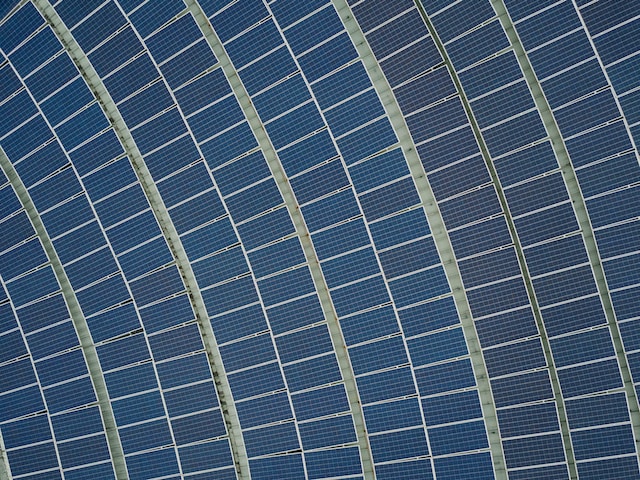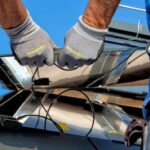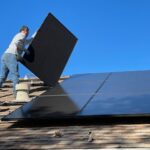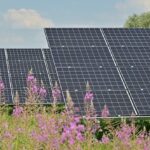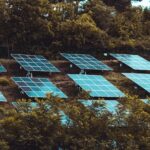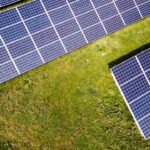The Solar Industry’s Race for the Next-Gen Photovoltaic Battery
Introduction:
The solar industry in China has witnessed a series of competitive technological races that have shaped its evolution. From silicon materials to silicon wafers, the baton now passes to the crucial battery segment. The question is, who will emerge victorious in this latest contest?
A Decade of Transformative Innovation:
Over the past two decades, the cost of manufacturing solar panels has plummeted by over 90%, thanks to improved production processes and economies of scale. Simultaneously, mainstream photovoltaic cell efficiency has surged from 12% to approximately 23%. Continuing this efficiency surge now hinges on technological innovation.
The Tipping Point for Solar Technology:
The solar cell technology landscape is at a critical juncture, with more efficient cells entering mass production. All solar companies must adapt and select more efficient new technological pathways; otherwise, they risk obsolescence.
Capital Influx Accelerating Innovation:
A substantial influx of capital is a key driving force behind the rapid evolution of solar technology. In 2022, Chinese solar companies raised a staggering ¥136.2 billion in financing, nearly four times the amount in 2019. This surge has pushed the capacity of various industry segments to over three times that of 2019. These new production capacities adopt novel technological pathways, with the output of new technology products set to surpass that of current mainstream cells within one to two years. Consequently, a massive replacement of old capacities is imminent.
The Dominance of PERC Cells:
Currently, PERC (Passivated Emitter Rear Cell) cells dominate the solar market. However, a new generation of highly efficient photovoltaic cells is emerging, primarily represented by two types: TOPCon and HJT (Heterojunction).
- TOPCon Cells: Began mass production in 2022, offering lower costs.
- HJT Cells: Mass production set to start in 2023, boasting higher efficiency.
From an industry perspective, TOPCon production lines exhibit some compatibility with older lines, benefiting from a mature process. In contrast, HJT is a novel technology with a shorter process and higher technical barriers.
Emerging Companies Leading the Charge:
Several high-growth newcomers have emerged thanks to these new technologies. Yidao New Energy and Huasun Energy are leading players in the TOPCon and HJT categories, with valuations around ¥10 billion each. Additionally, numerous solar companies related to new technologies have already gone public or are preparing for IPOs, such as Laplace, which started with TOPCon production lines.
Established Giants Hedging Bets:
Major solar industry leaders have diversified into both TOPCon and HJT technologies. Jinko Solar is betting on TOPCon, while Risen Energy favors HJT. Most other top-tier companies have specialized in one technology while experimenting with additional lines for other technologies.
The Battle for Solar Supremacy:
Can the new entrants with innovative technologies displace established leaders in this cycle of technological evolution? The competition for solar technology leadership is now at its peak.
The Four Stages of Photovoltaic Manufacturing: Silicon Materials, Silicon Wafers, Cells, and Modules:
- Silicon Materials: GCL-Poly emerged victorious in the first competitive round.
- Silicon Wafers: Longi Green Energy Technology secured the second stage.
- Cells: The third round is currently unfolding.
Most companies have identified their key technologies but have only partially built or fully commissioned their production lines. Companies taking a wait-and-see approach still have an opportunity to make new choices. The winners of this competition will emerge from the pioneers.
The Transition from P-Type to N-Type Cells:
The transition from P-type silicon wafers to N-type wafers has already begun. P-type Back Surface Field (BSF) cells were the dominant technology for over a decade. Currently, N-type cells are making headway, with TOPCon and HJT representing the N-type category.
The Efficiency Game:
As of 2022, PERC cells had an average photovoltaic conversion efficiency of 23.2%. TOPCon cells achieved an average conversion efficiency of 24.5%, and HJT cells reached 24.6%. Each 1% increase in cell efficiency translates to an additional 12.5 kWh of electricity generated per square meter of solar panel annually, based on industry averages.
The Road Ahead:
The industry consensus is that due to significant capital infusion, both TOPCon and HJT cells will become mainstream within two to three years. However, both are transitional products. The ultimate goal is to develop tandem solar cells by layering either TOPCon or HJT cells over perovskite solar cells, achieving efficiencies exceeding 30%.
Replacing Old Capacity:
The massive replacement of old capacities will unfold over the next two years. As of 2022, China had a total solar cell production capacity of 505.5 GW, with an output of 330.6 GW. PERC cells constituted 88% of the market, while TOPCon held an 8.3% share, equivalent to 27.4 GW. HJT cells had a 0.6% market share, totaling 2 GW. It is anticipated that TOPCon cell shipments in 2023 will be around 100 GW, roughly four times that of 2022.
Factory construction and reaching full production capacity typically take about a year. As a result, 2024 will witness a significant expansion of TOPCon cell production capacity. According to CITIC Securities, TOPCon capacity will reach around 372 GW by 2023, increasing to 635 GW by the end of 2024, surpassing the capacity of PERC cells.
In contrast, HJT cell production capacity is expanding at a relatively slower pace than TOPCon. As of July 2023, domestic solar companies had existing and planned HJT cell capacities exceeding 214.6 GW. HJT faces challenges in equipment and raw material supply compared to TOPCon, requiring a higher level of technical expertise in semiconductor and thin-film cell technology. Therefore, HJT is better suited for capable new companies and established industry leaders with accumulated experience.
According to the China Photovoltaic Association, TOPCon and HJT cells together will account for over 50% of the market by 2025, with HJT approaching parity with TOPCon by 2030. The competition for leadership in the solar industry’s new technological landscape has reached its zenith.
